
Carlo Fea was an Italian archaeologist.

Giuseppe Bossi was an Italian painter, arts administrator and writer on art. He ranks among the foremost figures of Neoclassical culture in Lombardy, along with Ugo Foscolo, Giuseppe Parini, Andrea Appiani or Manzoni.

Paolo Frisi was an Italian mathematician and astronomer.

Gabrio Piola was an Italian mathematician and physicist, member of the Lombardo Institute of Science, Letters and Arts. He studied in particular the mechanics of the continuous, linking his name to the tensors called Piola–Kirchhoff.

The Pinacoteca di Brera is the main public gallery for paintings in Milan, Italy. It contains one of the foremost collections of Italian paintings from the 13th to the 20th century, an outgrowth of the cultural program of the Brera Academy, which shares the site in the Palazzo Brera.
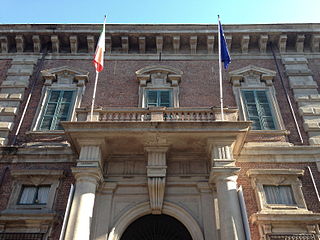
Palazzo Brera or Palazzo di Brera is a monumental palace in Milan, in Lombardy in northern Italy. It was a Jesuit college for two hundred years. It now houses several cultural institutions including the Accademia di Brera, the art academy of the city, and its gallery, the Pinacoteca di Brera; the Orto Botanico di Brera, a botanical garden; an observatory, the Osservatorio Astronomico di Brera; the Istituto Lombardo Accademia di Scienze e Lettere, a learned society; and an important library, the Biblioteca di Brera.

Achille Costa was an Italian zoologist working mainly in entomology who was appointed director of the Zoological Museum of Naples. He founded the entomological collections in Naples and described many new species.

Carlo Amoretti was an ecclesiastic, scholar, writer, and scientist. He entered the Augustinian order in 1757. To further his studies, he went to Pavia and Parma where he also taught ecclesiastical law.

Giuseppe Ghezzi was an Italian painter of the Baroque period, active mainly in Rome.
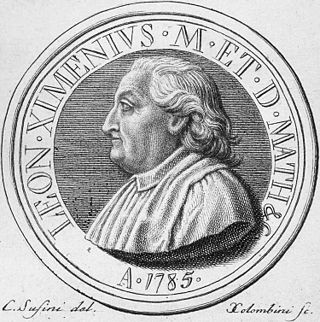
Leonardo Ximenes was a famous Italian Jesuit, mathematician, engineer, astronomer and geographer from Sicily.

Tomasso Sandrino (1575–1631) was an Italian painter of quadratura in Northern Italy, active in his native Brescia.

Roger Joseph Boscovich was a physicist, astronomer, mathematician, philosopher, diplomat, poet, theologian, Jesuit priest, and a polymath from the Republic of Ragusa. He studied and lived in Italy and France where he also published many of his works.

Cristoforo Negri (1809-1896) was an Italian geographer, economist and diplomat.
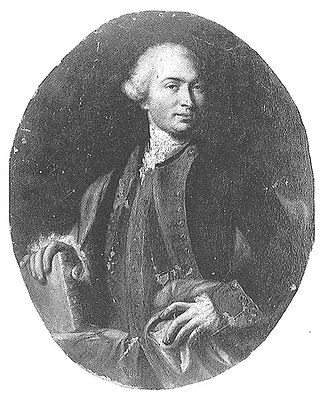
Antonio Maria Lorgna (1735-1796) or Antonio Mario Lorgna was a mathematician from Italy in the 18th century, founder of the Accademia nazionale delle scienze.
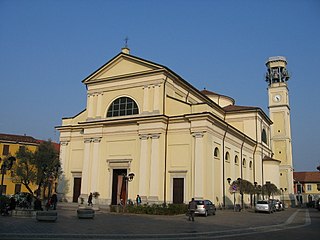
The Church of Saint Bartholomew is the cathedral and the oldest parish in Brugherio, Italy. It houses relics of the three Magi. It is characterised by its relatively high bell tower measuring 36.8 metres (121 ft).

Ermenegildo Pini (1739–1825) was an Italian clergyman, naturalist, mathematician, geologist and philosopher. He belonged to the Barnabite Order and worked mainly in northern Italy. He attempted to examine scientific ideas on geological phenomena and fossils and show them as being consistent with the framework of Biblical Genesis.

Ottavio Serena was an Italian politician, judge, prefect and historian. He is known in his hometown Altamura for his works about local history, such as the Altamuran Revolution (1799). His contribution and the testimonies he collected allowed to shed light on some historical events (such as the killing of Giovanni Firrao and on legendary toponyms.

Gustavo Frizzoni was an Italian art critic and art historian.
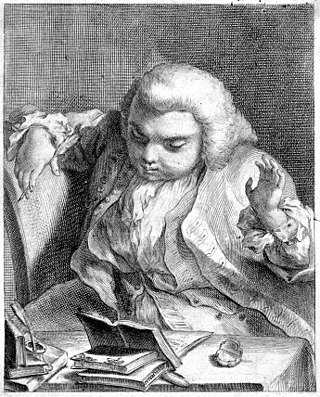
Domenico Balestrieri (1714–1780) was an Italian scholar, writer and poet. He gained his fame as an author of "dialectal" works in Milanese language, for which he is considered one of the classics of Milanese literature. Baestrieri's work was a major inspiration source for later Milanese writers such as Carlo Porta.

The monument to Leonardo da Vinci is a commemorative sculptural group in the Piazza della Scala, Milan, unveiled in 1872. It is surmounted with a statue of Leonardo da Vinci, while the base has full-length figures of four of his pupils: Giovanni Antonio Boltraffio, Marco d'Oggiono, Cesare da Sesto, and Gian Giacomo Caprotti.































